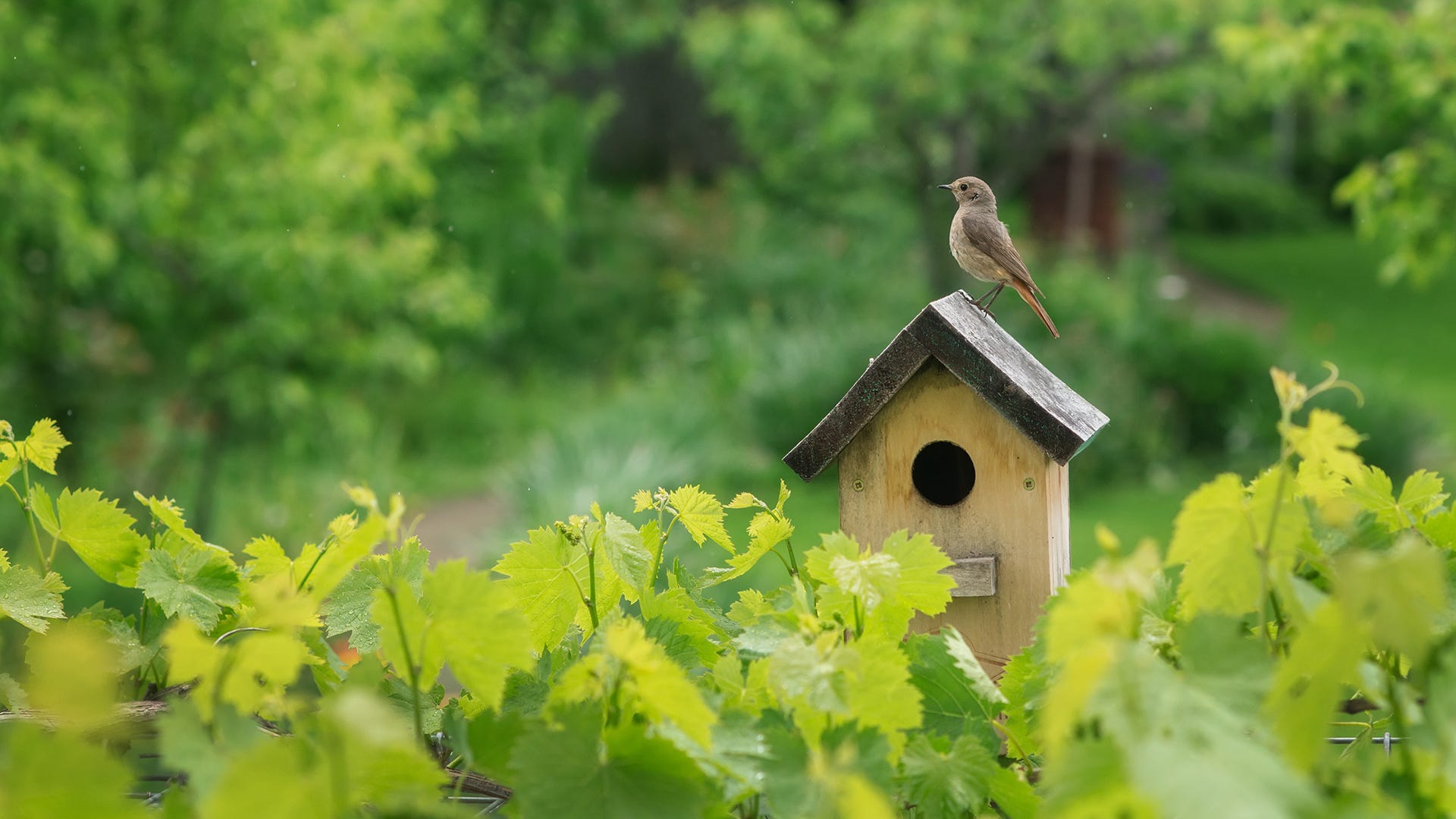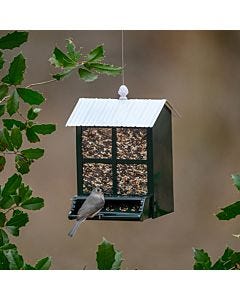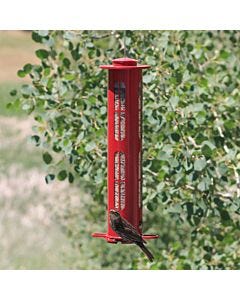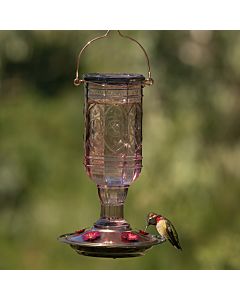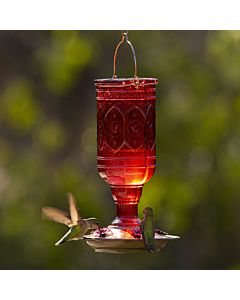You may be interested in having a bird house just for decoration, or you may be trying to attract certain types of birds.
However, if you want to attract a specific species, in most cases, you will need to build or buy a specific type of bird house. For example, Purple Martins nest in colonies and Robins nest on platforms without roofs. Most bird houses are square or rectangular and feature an entrance hole, keep in mind the size of the box and the size of the entrance hole will attract certain species. Here are some types of bird houses that specific species nest in.
Nest Boxes for Bluebirds
Bluebird houses are quite simple, with a small entrance hole (2 1/4" x 1 3/8") and large roof for extra protection. Bluebird boxes are commonly taken over by other small birds like House Sparrows, and because their population is declining, it is important to include a cone-shaped predator baffle and monitor the activity around the nest box. You could also consider drilling a second entrance hole beside the first one to enable bluebirds to better defend boxes from sparrows.
Attach bluebird boxes to a pole and place them in the sun and about 4 to 6 feet off the ground. Position the nest box so that the entrance hole is facing east and towards open habitat. If you're placing more than one next box in your yard, try to space them about 15-20 feet apart to reduce competition.
Nest Shelf for Robins
If you would like to watch Robins, Barn Swallows, or Phoebes nesting, you won’t need a bird house. Often considered a bird of spring, Robins begin their breeding cycles shortly after returning to their summer range. Their iconic pastel-colored eggs are unmistakable as well.
Robins, Barn Swallows, and Phoebes nest on shelves or ledges — and often in locations that seem intrusive to human activities. However, you can attract them to areas you want by building a platform yourself.
All you need is a platform floor with a little border around it and a back piece for attaching it. Mount the nesting shelf on a building or post in a sheltered site, including under the eaves or soffitsm or over a light fixture. It should be placed at a height 5-25 feet off the ground. Blue Jays, Mourning Doves and Cardinals will also use these types of nesting platforms.
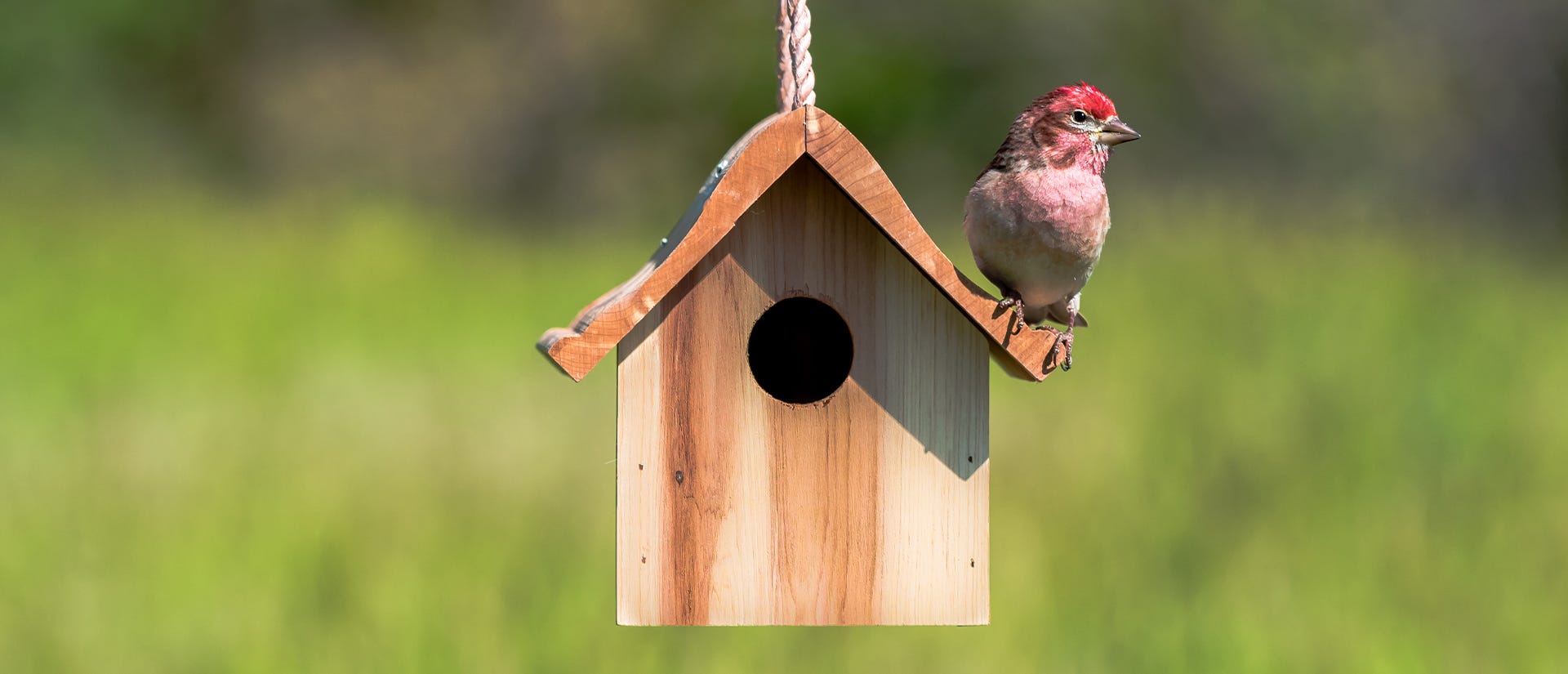
Bird Houses for Wrens & Chickadees
To attract Wrens, the most important aspect of the bird house is the hole. Make sure the diameter is no larger than 1 1/4", which is large enough for all types of Wrens and Black-capped Chickadees to use, but too small for House Sparrows. Tree Swallows will also use this type of house.
Wren bird houses can be attached to a tree, a pole, or even a building. It should be anywhere from 5-10 feet off the ground. The house should be placed within 100 feet of cover, such as woody vegetation. Wrens are known to fill or take over all of the nest sites in the area to defend their territory. As they do say, they may destroy the eggs of nearby cavity nesters. Place nest boxes intended for other bird species at least 100 feet away and in a more open habitat that is less attractive to wrens.
Black-Capped Chickadees also prefer a well-covered bird house. These birds also enjoy having wood shavings in the bottom of their nest box and prefer for the entrance to face away from the wind.
Colonies for Purple Martins
Purple Martins nest in colonies, so their bird houses are very different and more complex - they're almost like a mini neighborhood! Depending on how many you want to attract, you must build them in multiple levels. These bird houses are usually rounded, and should feature a protective roof as well. You can also simply hang several gourds in a cluster.
Attach the house to a pole, approximately 10-15 feet off the ground. For your own convenience, mount it on a pole that can be lowered for cleaning and maintenance. Colonies should be set about 60 feet from other obstacles, including trees and buildings. Purple Martins seem to prefer houses painted white (but do not paint the inside). Purple martin decoys can be placed nearby to attract these social birds to your new house.
Need to Move A Nest? Don’t Do It
If you find a nest around your house, try not to disturb it. Moving it can be illegal, as some species of birds are protected by law. Birds will not abandon the nest if you touch it, but if they see you getting too close, they may abandon eggs that aren’t hatched.
Your best bet is to leave the nest as is and allow the birds using it to raise their young. At most, the entire process of nest creation, incubation, and raising the young fledgings will take about two months.
Want to Build Your Own Bird House?
If you are interested in building your own bird houses, here are some helpful guidelines to choose the right house for your birds. For some specific designs for the species listed above, try these links:
- Build A Bluebird Nest Box
- Build A Wren House
- Build A Chickadee House
- Build A Robin Nest Platform
- Build A Purple Martin Colony
Want to Learn More?
At Perky-Pet® we love learning about birds and sharing our knowledge with like-minded birding enthusiasts. Want to join in on the fun? Share your pictures, stories, and advice with us on Facebook or our Birding Community. You can also subscribe to our e-newsletter to stay up to date with our birding advice, new products, and exclusive offers. Good luck and happy birding!





